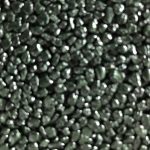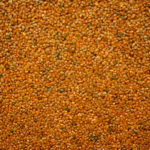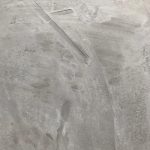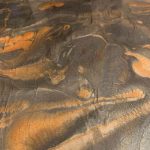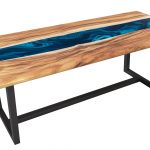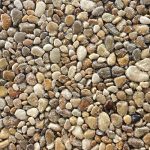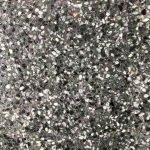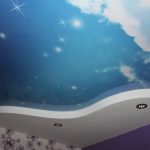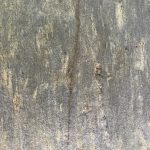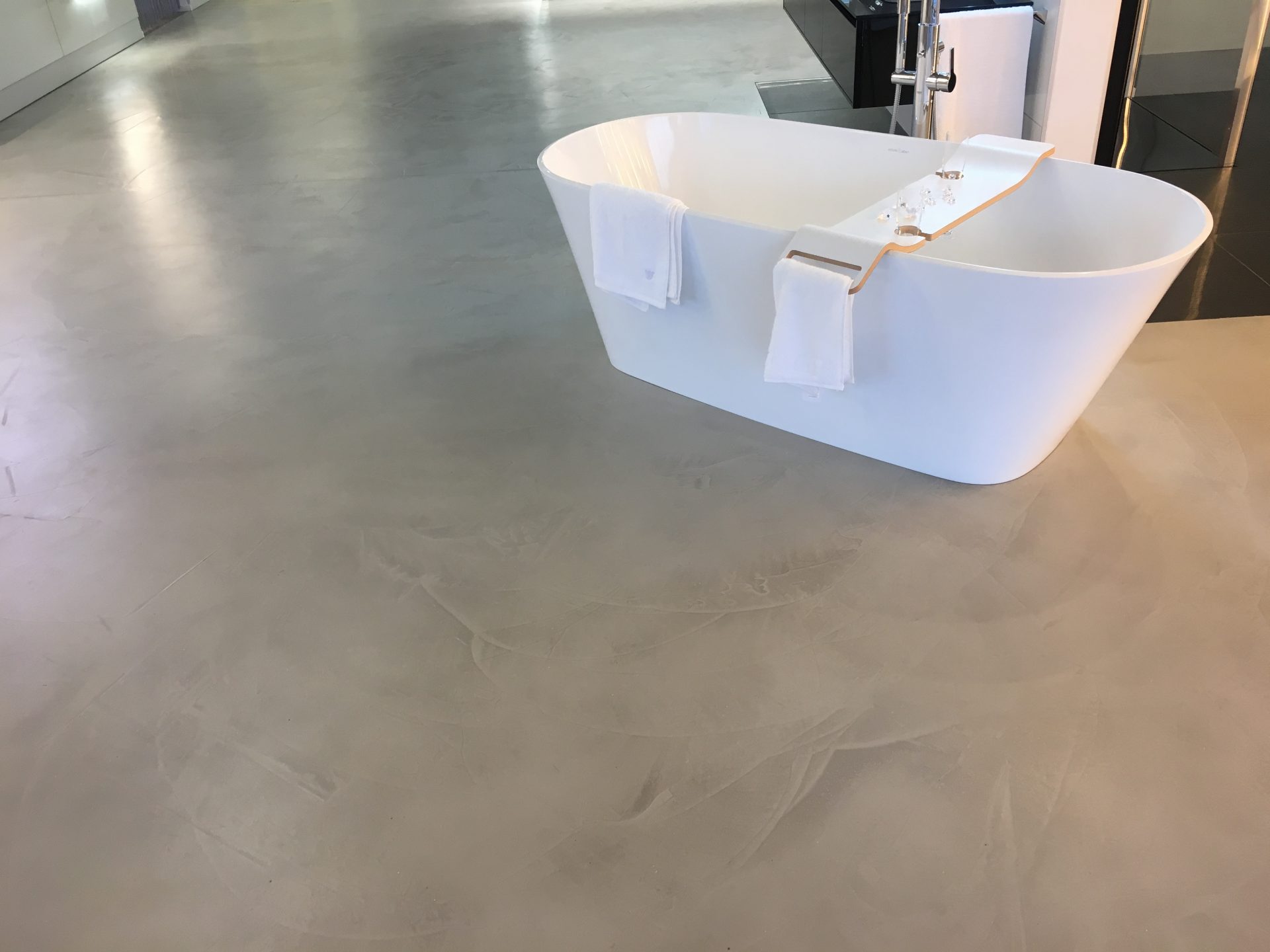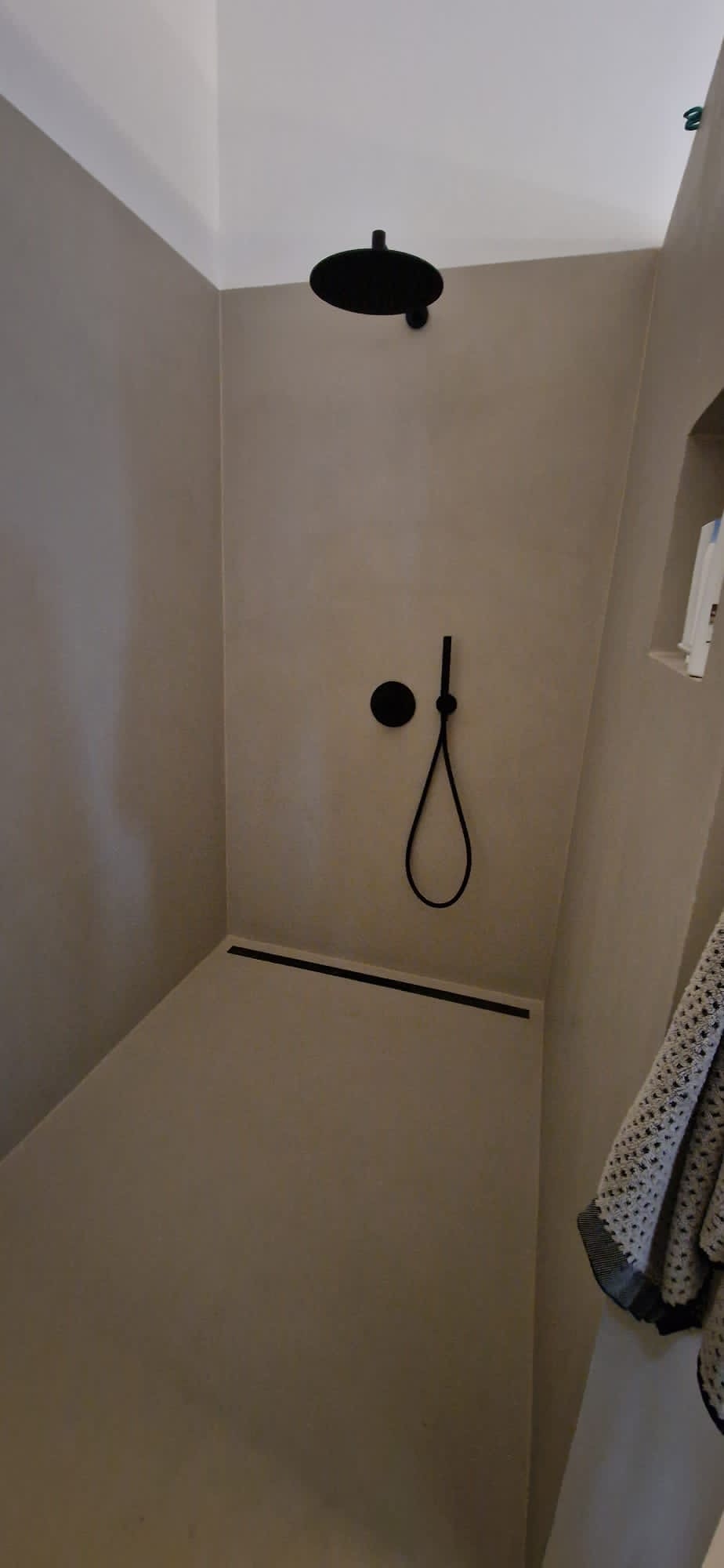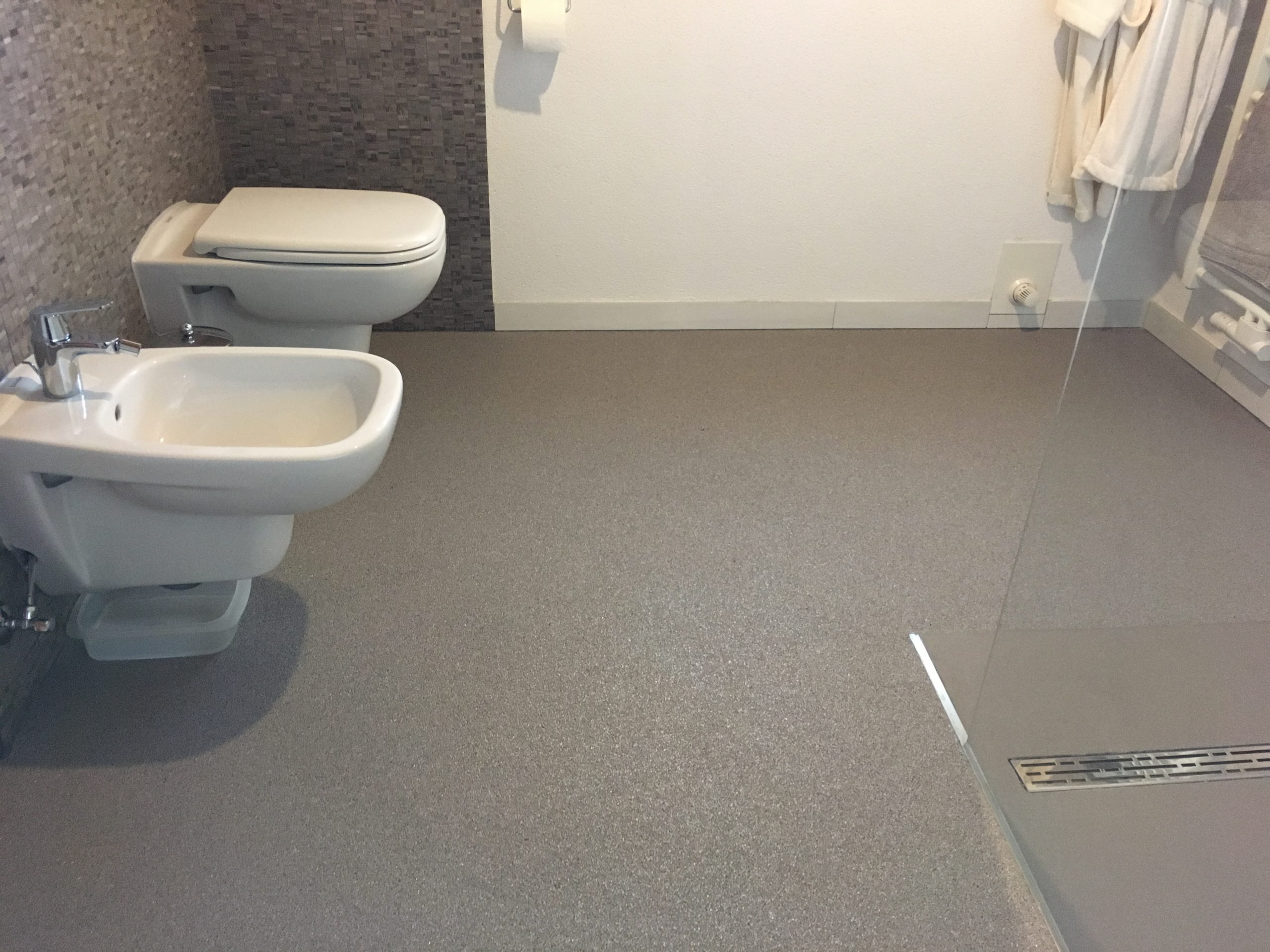Are you looking for a new floor covering for your home, office or retail space? Have you ever considered using epoxy flooring? Epoxy flooring can be an excellent choice and is highly recommended.
Our expertise in seamless cast floors enables us to provide you with comprehensive advice and design the ideal surface for your flooring requirements. Marbled surfaces and floors with a 3D look are particularly popular for the home. Read more about the areas of application of epoxy resin in flooring in the private and commercial sector here.
Contents
- Is an epoxy resin floor suitable for all applications?
- Properties and advantages of epoxy resin floors
- Areas of application for epoxy resin floors
- Crystal clear epoxy resin
- How is an epoxy resin floor constructed?
- Epoxy floors: particularly easy to clean
- 3D floor made of epoxy resin
- Marble look and concrete look
- Epoxy resin floor with metallic effect
- Seal epoxy resin floor
- An epoxy resin floor should always be laid by a specialist
- Epoxy resin training
- Non-binding Cost estimate
- Link collection
- FAQ
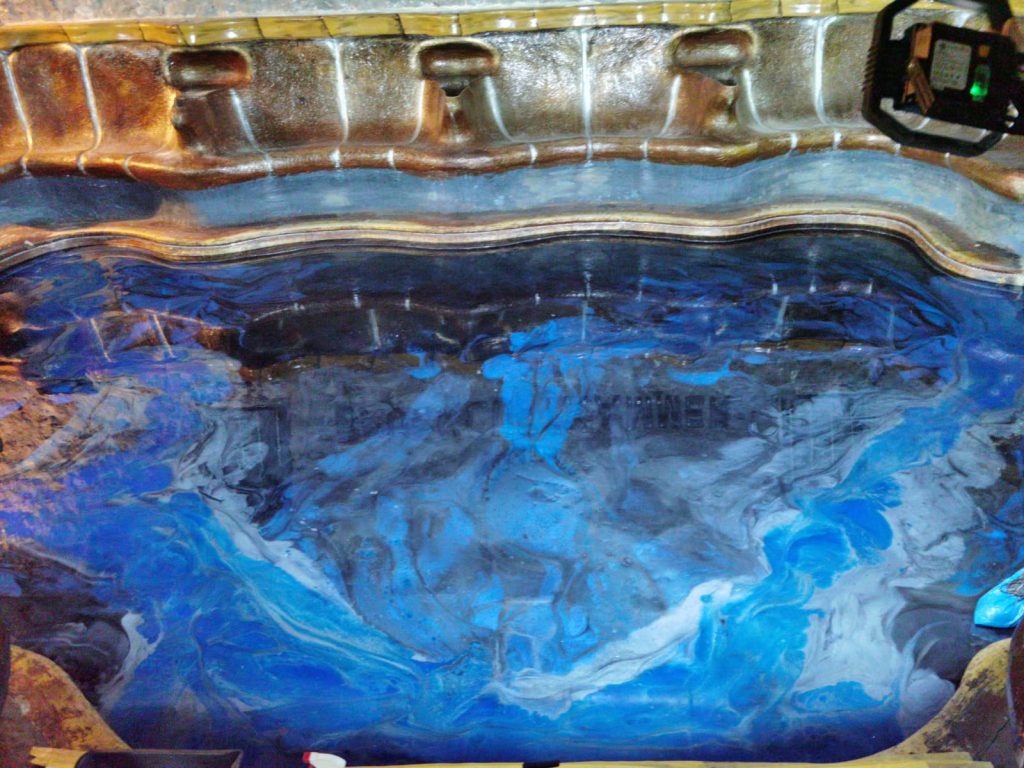
A bathroom without joints?
Sounds tempting and could actually be the solution for a modern, easy-care ambience. A bathroom without joints not only gives a feeling of spaciousness, but also offers easy cleaning and an overall more elegant appearance. But what alternatives are there to traditional tiled walls and what aspects should be considered when planning a seamless bathroom? Let’s delve into the world of seamless bathroom design and discover what makes it so attractive and worth recommending.
From the workshop to the living room - epoxy resin floors everywhere Is an epoxy resin floor suitable for all areas of application?
Anyone familiar with epoxy resin flooring from the past probably thinks of an industrial floor. And it’s no wonder: due to its ease of maintenance and exceptional durability, it is often seen in warehouses and assembly halls, showrooms, workshops and retail outlets. It is also regularly used in open-plan kitchens and hospitals. Its exceptional load-bearing capacity and seamless structure provide exactly the properties that are required in areas with high demands on a coating system.
At first glance, it seems unusual that such floors are being used more and more in the private sector. And in fact, in addition to the similarities between the various coatings, there are also some differences between the commercial version and the decorative flooring for the living room, kitchen and bathroom. However, at least the industrial look is increasingly finding its way into the private sphere. So it’s high time we took a look at the advantages, similarities and differences between the various types of epoxy resin flooring.
Properties and advantages of epoxy resin floors
- absolutely flat
- uv resistant
- solvent-resistant
- waterproof
- easy cleaning
- short curing times
- high adhesive strength
- sterile
- acid and alkali resistant
- abrasion resistant
- pressure-resistant
- highly resilient
- individual color design
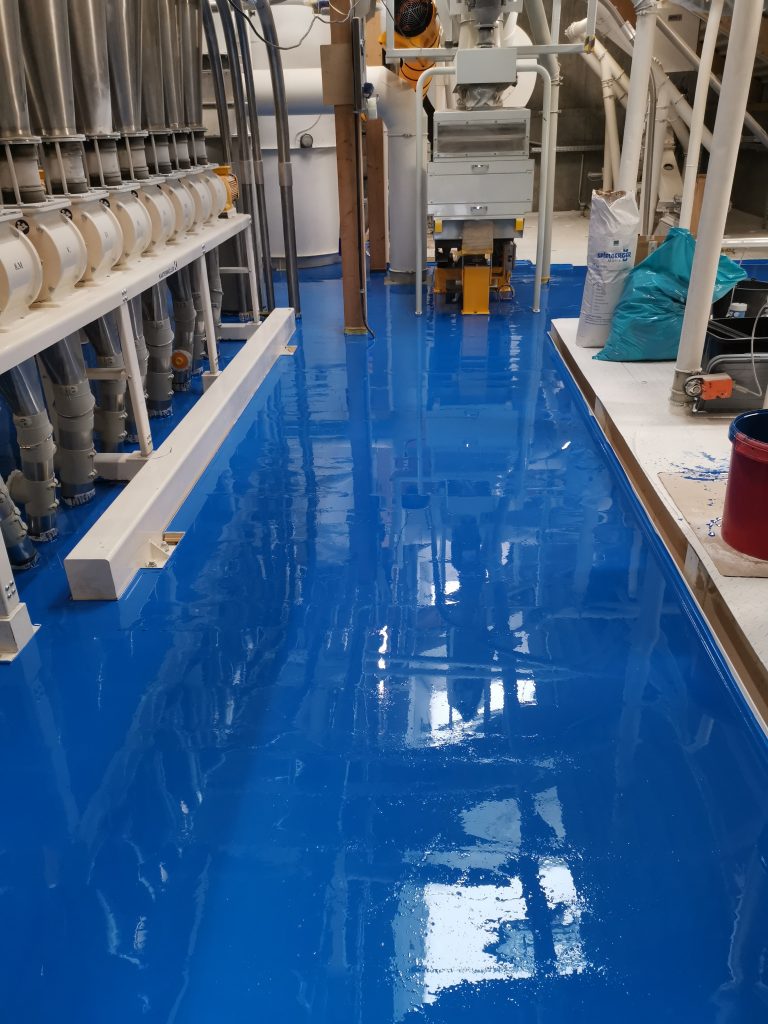
Areas of application for epoxy resin floors Epoxy resin flooring in industry
In the industry, particularly robust resins with a filler have always been used, where the appearance often takes a back seat.
It is characterized by its hard-wearing, trafficable surface and the ability to lay large areas in one day. The temperature resistance and hygienic surface are also clear plus points. It is also resistant to liquids such as oil and petrol. Of course, industrial floors are also waterproof. Depending on the area of application, anti-slip seals are applied or fine quartz sand is sprinkled to ensure increased safety at work.
In addition to use in production halls, laboratories, commercial kitchens, breweries, parking garages and warehouses with forklift traffic, use in garages or usable areas in the private sector is also conceivable. Here, however, it should be clear that even color-pigmented surfaces can only compete visually to a limited extent with decor variants that rely on metallic effects and photo prints, for example. The focus here should always be on the benefits.
Epoxy decorative flooring for the living area
Recently, EP flooring has also found its way into the home. While the functionality of the floor coating plays a key role in industrial and commercial areas, the focus in the private sector is on brilliant design. Of course, the epoxy resin floor should also be able to withstand daily wear and tear. However, this is considerably less than in halls with forklift traffic.
This change in demand has resulted in a new requirement for the resin: the absolute and lasting clarity of the material. Whereas in the past, yellowing could occur after a few years in sunlit rooms, modern synthetic resins meet this requirement.
3D floors with a floor film or metallic effect are becoming increasingly common in living spaces such as living rooms, study rooms, kitchens and bathrooms, where they impress with their attractive appearance.
Epoxy resin flooring in trade
Epoxy floors are also being used more and more frequently in offices and exhibitions, for example to create floors that match the corporate design. There are plenty of reasons to use these floors: epoxy resin flooring is hygienic and easy to clean, adaptable to the design concept and robust. It is therefore a very good alternative to conventional coatings.
This is the difference between industrial and decorative coating Crystal clear epoxy resin
Fine air bubbles are created when mixing and applying the thin layer of material. To create a stable, even poured floor, it is important that the material is de-aerated after laying.
As the focus in residential and many commercial properties is on appearance, the floor cannot be de-aerated with a so-called spiked roller, as is the case with industrial floors. Nevertheless, all air pockets must be removed from the epoxy layer, as these would be particularly noticeable with clear resin. This is why Qubo® Resin decorative flooring resins are designed to de-aerate themselves during curing, as long as no filler is added.
The reasons for the desire for transparent, self-deaerating synthetic resin become clear when you understand the structure of an epoxy coating.
From priming to sealing How is an epoxy resin floor constructed?
A major advantage of epoxy resin flooring is that it is easier to install than other floor coverings. The reason for this is that no individual elements need to be cut to size. The material can be adapted precisely to the existing contours. This avoids waste and reduces working time.
An epoxy resin floor consists primarily of the eponymous resin. This is applied to the substrate as a thin layer, often only 2 – 3 mm thick. Due to the extremely thin layer thickness, the substrate must be very well prepared. This means that it must be clean, level and without any slopes. Any depressions or sagging areas must be evened out with a leveling compound before laying.
This is followed by the necessary priming of the substrate. The purpose of the primer differs depending on the type of epoxy flooring system. For example, it ensures good adhesion of the floor to the substrate, but can also be used for design purposes.
The next step is the main layer, which has a decisive influence on the design and function of the floor. Here too, various systems are used, from filled to colored pigmented to fully transparent resin.
Due to the filler contained in the EP industrial flooring Qubo® EP07, the resin does not deaerate on its own. This is why industrial coatings are rolled off with a spiked roller immediately after application. This deaerates the epoxy layer, whereupon the coating levels itself out again. Spiked shoes must be worn during installation to avoid leaving footprints in the fresh floor.
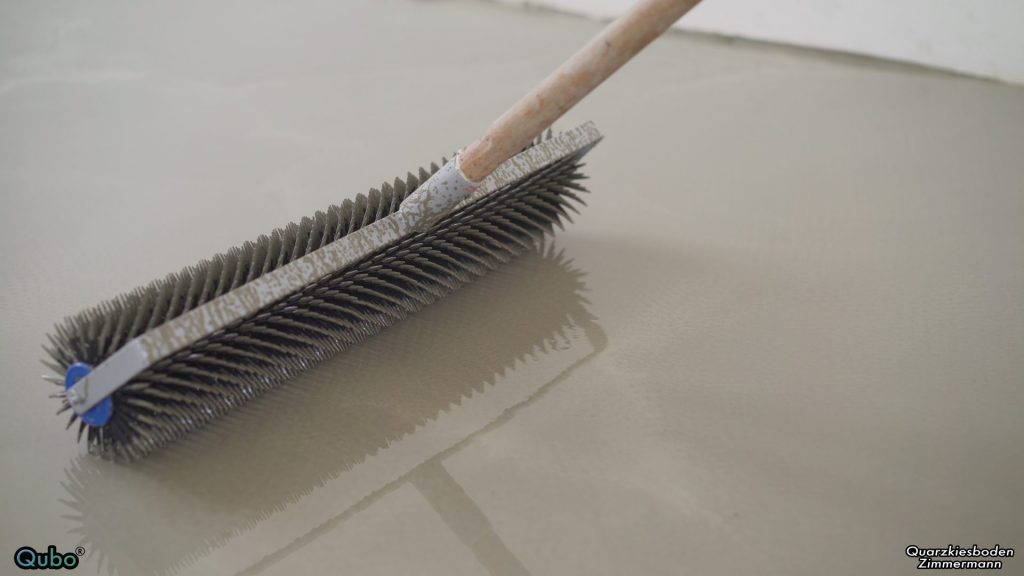
The crystal-clear Qubo® Resin epoxy resin floors de-aerate on their own due to the special resin formulation without fillers. It is therefore not necessary to use a spiked roller here.
Once the synthetic resin layer has been applied, deaerated and cured, a sealing layer may follow. As the different sealers have their own specific purposes, there is a special section on this topic at the end of the article.
The type of cleaning depends on the structure Epoxy floors: Particularly easy to clean
Thanks to the continuous, seamless structure, epoxy coatings are particularly resistant to dirt, which makes cleaning easier. There are no recesses in which dirt could accumulate. EP floors are therefore generally very hygienic.
The way in which the floor is cleaned depends on the structure of the system used. Qubo® Resin decorative coatings, for example, can simply be damp mopped or vacuumed. More stubborn stains can be removed with mild cleaning agents.
Industrial floors made of Qubo® EP07 are usually exposed to much heavier soiling. The cleaning instructions differ depending on whether the finished industrial floor is smooth or slip-resistant: While the pure epoxy resin floor is simply wiped with cleaning agents thanks to its even surface and resistance to scratches and chemicals (depending on the selected sealant), different measures are required for the anti-slip floor. Coarse dirt is removed with a broom. Water jets are used for heavier soiling.
Incidentally, water is not a problem for the floor. Epoxy resin forms a closed surface that is absolutely waterproof.
Spatial-looking photo prints in the 3D floor 3D floor made of epoxy resin
With 3D flooring, a three-dimensional photo is printed onto a space-filling film, which is then incorporated into the floor. For this purpose, ready-printed motifs are available to buy as foil prints. However, some service providers also offer the option of printing your own photos as floor film to give the 3D floor a completely individual design. The basic prerequisite for the deceptively realistic 3D effect is a high-quality photo from a suitably selected perspective that has been printed with durable colors.
The printed film is applied to the floor after it has been cleaned of dirt and any unevenness. The latter is essential in order to achieve a particularly realistic visual impression of the finished epoxy floor.
Once the film has been applied smoothly over the entire surface, it can be “laminated” with the actual resin layer. The clear casting resin is poured onto the floor after mixing and spread evenly with a rubber squeegee. A lot of skill is required here! On the one hand, the entire floor must be completely coated with the synthetic resin. Secondly, the resin starts to harden as soon as it is mixed. This is not an issue for professional installers, but often a risk for ambitious DIY enthusiasts, as the epoxy resin, once applied, forms an extremely stable floor that is comparatively difficult to remove.
Once the resin layer has hardened through – which is usually the case the next day, but can take several days at particularly low temperatures – your surface is sealed. This provides additional protection against scratches and is also completely transparent.
Color pigments for eye-catching designs Marble look and concrete look
Unlike with 3D flooring, the resin does not remain transparent with the marble-look or concrete-look epoxy floor. Here, the epoxy coating itself is the design element. To achieve the look of a marble surface or the design of exposed concrete, various color pigments are used in the epoxy resin floor.
Many types of marble are characterized by fine lines and larger inclusions in different shades of colour. To create this effect with the resin, epoxy resin is first mixed with the planned base color, poured over a large area of the floor and evenly distributed. The installer then draws further fine lines into this base color. To do this, he uses additional epoxy mixtures with other pigments.
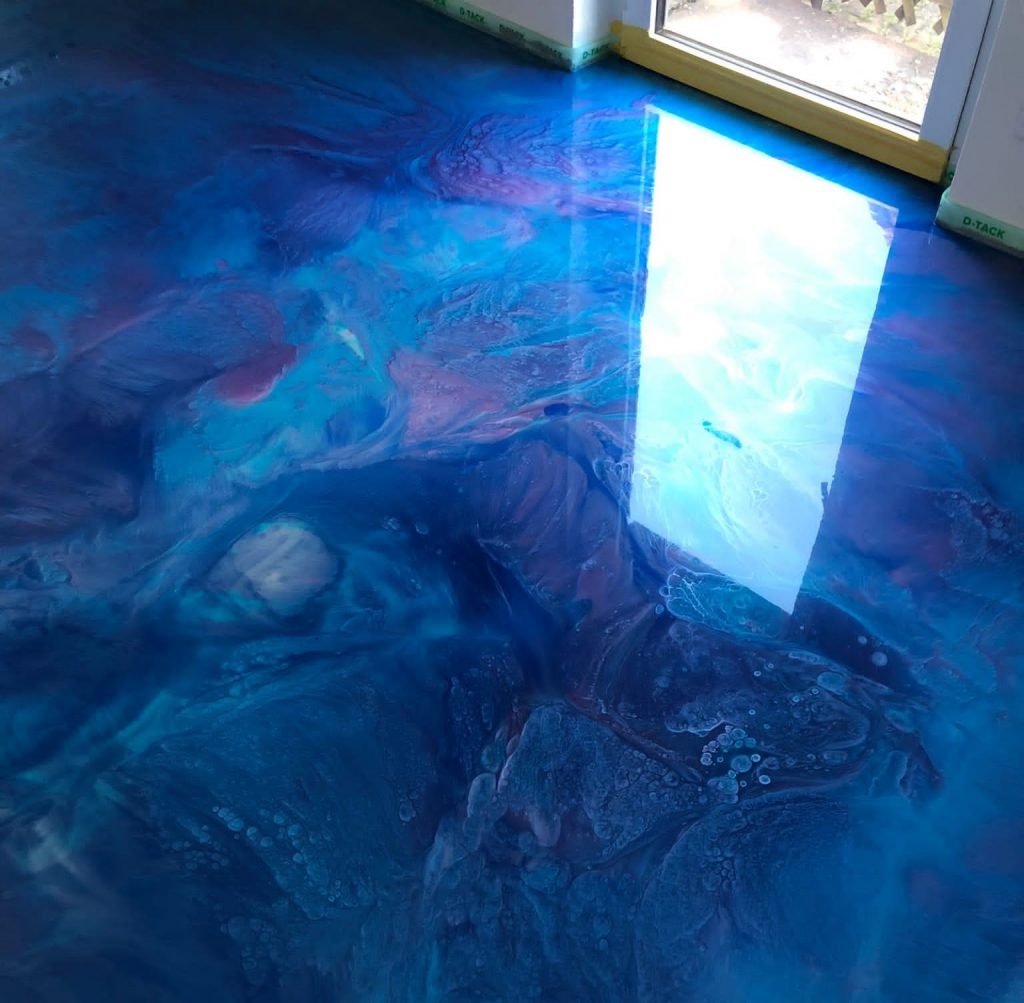
The trick now is to create the entire surface evenly without mixing the differently colored resin parts too much. The more often you have to rework, the more fine lines become color gradients without a clear contour. But of course this effect can also be desirable. A high degree of creativity and advance planning are therefore required here.
Speaking of creativity: of course, this type of epoxy flooring is not limited to natural colors. Bold combinations or streaks in pastel shades are also conceivable. Monochrome design surfaces can also be created to set specific accents.
As the resin is heavily pigmented in this technique, the primer for this floor is more functional and only has a limited influence on the appearance. It is often kept in the same color as the epoxy resin floor itself.
Are you interested in a resin-bonded floor covering made of real marble? Then find out more now about the Qubo® stone carpet!
Metallic sheen in the epoxy resin floor Epoxy resin floor with metallic effect
Basically, floors with a metallic effect are created in a similar way to epoxy resin floors with a concrete look or marble look. Unlike the fully pigmented variants, however, semi-transparent layers with a metallic sheen can also be created here. Accordingly, the primer layer is already included in the design of the floor.
The combination of the colored pigmented base layer and the top layer with metallic pigments creates a spectacular 3D effect. The fine metallic shimmer of the floor, with its spatial depth effect, is simply phenomenal.
Die verschiedenen Versiegelungen und ihre Vorteile Epoxidharzboden versiegeln
As mentioned, sealers are used on the various epoxy resin floors, which have a significant effect on the properties of the floor. For example, it is understandable that a 3D floor should have as smooth and shiny a surface as possible. This is the only way to achieve the full spatial effect of the floor film.
While a semi-gloss finish would be out of place on a 3D floor, it comes into its own elsewhere. With more pigmented variants in a marble or concrete look, a silky sheen creates a harmonious look and also ensures that any scratches are much less noticeable. A matt seal also has these effects, but it is ultimately a matter of taste.
In addition to the design seals, it is also possible to apply various utility seals. For example, a special, extremely scratch-resistant seal can be rolled on for heavy-duty use. In wet areas in industry, where high demands are placed on slip resistance, the synthetic resin floor is given an anti-slip sealing layer with scattering. The scattered material makes the surface rough so that shoes can still grip even on wet slopes. Of course, such floors can also be cleaned with jets of water.
An epoxy resin floor should always be laid by a specialist
Not all epoxy resin floors are the same! No two products are ever the same. There are many different suppliers on the market whose components and products behave very differently during processing. The individual components of different flooring systems are also not always compatible with each other. Two factors are therefore particularly important when installing EP flooring:
- When you buy the individual components of the Qubo® quality brand, you can be sure that the materials used are compatible with each other. From the primer and resin components to pigments, photo films and sealants, many different individual products have to be tested for compatibility. If you rely on a tried and tested system, you can be sure that the products are compatible.
- Only those who know how the material to be laid behaves when applied to different substrates and in different environments can guarantee a professionally laid floor. Creating a smooth, resilient and attractive epoxy resin floor involves far more steps than just pouring and spreading the resin. This is why it is particularly important to rely on a trained professional for the installation.
Quarzkiesboden Zimmermann works with professional installers who have attended the Qubo® epoxy resin flooring product training course at the Qubo® training center. This ensures that customers receive a professionally installed EP floor.
We will be happy to advise you – whether as an end customer or publisher – on the various versions by telephone. Contact us via our online form.
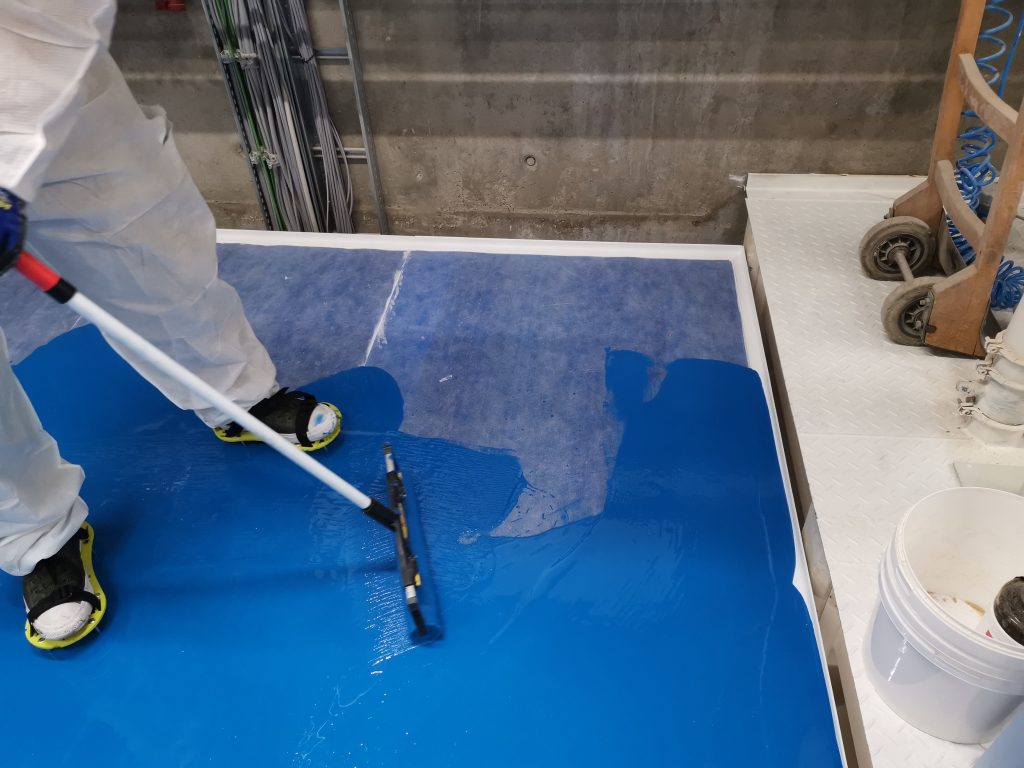
Here you will find seminars for epoxy resin floors Epoxy resin training
If this article has whetted your appetite and you now want to learn how to install epoxy resin floors professionally yourself , it is worth visiting the Qubo® epoxy resin floor training course.
For companies that would like to train several employees to become epoxy resin flooring installers, offers the option of booking an individual company training course. In this case, the staff of a company remain among themselves and benefit from a training program that is adapted to the requirements of their own team in advance.
Are you interested in a resin-bonded floor covering made of real marble? Then find out more about the Qubo® stone carpet!
Get to know our epoxy resin floors and ensure that your customers …
… for a strong appearance!
Non-binding cost estimate and advice
Link collection
Our Qubo® Resin
With colored epoxy flooring, this is the pigmented epoxy resin. In addition to the desired color, the design layer can be enhanced with special pigments and effects. A pigmented epoxy resin floor with a glossy surface is already laid at this point.
Um der Oberfläche ein mattes Aussehen oder ein seidenmattes Finish zu verleihen, kann am Ende eine geeignete Versiegelung aufgetragen werden.
With the 3D floor, the photo film is fixed after priming. The final top layer is then poured using the transparent resin.
Each of the applied layers can be walked on after a curing time of 24 hours. Depending on the existing substrate, additional preparation steps may be necessary so that the finished floor can be walked on after 3-4 days. The epoxy resin is fully cured and can withstand maximum loads after 7 days.
In general, conventional screed floors are suitable as a substrate for our Qubo® epoxy resin. Existing tiles can also be reworked if they are pre-treated accordingly.
A coating made of Qubo® epoxy resin is characterized by an extremely low construction height of only 2-3 mm.
In principle, a large selection of colors can be made available on customer request. The design options are extended by the possibility of sprinkling in particles for metallic and glitter effects and mixing color pigments with each other.
No, all our Qubo® Resin flooring systems are solvent-free.
An epoxy resin floor is created in two to three steps, each of which is followed by a drying phase until the next day.
On the first day, the substrate is prepared and provided with a primer coat. The actual design is created on the second day. The desired seal is applied on the third day.
The final step in the creation of an epoxy resin floor is the application of the sealer. This seal can also be made non-slip. For special requirements regarding the slip resistance class, simply contact us in advance.
The even surface and the resistant material give dirt no chance to penetrate the floor. This means that dirt can simply be wiped off the surface and liquids absorbed. This applies to epoxy floors in living areas as well as utility areas in cellars and garages.
In general, mild household cleaners should be used to clean Qubo® Resin floors and aggressive cleaning agents should be avoided. The latter should not only be used with caution in terms of health, they can also cause lasting damage to the surface of the flooring system.
Once the material has fully cured and chemically set, the epoxy resin floor is completely waterproof. This means that the system is also suitable for use in wet areas.
The Qubo® epoxy resin flooring systems are available in several versions with different areas of application.
Qubo® Resin floors are used to create surfaces that combine attractiveness and durability. The materials in this series are used to create the familiar 3D floors with three-dimensional photo foils as well as pigmented coatings with a concrete look and many other desired colors and effects.
The Qubo® EP07 is a system specially developed for industrial use, which allows thin, particularly robust coatings in the desired color for areas subject to extreme stress.
Ja, sowohl unser Qubo® Resin als auch unser Qubo® EP07 sind für den Einsatz in Garagen geeignet. Für eine ausführliche Beratung zur Auswahl des passenden Systems stehen wir Ihnen gern für ein persönliches Gespräch zur Verfügung.
Sprechen Sie uns einfach an
.
FAQ
Details and facts, key figures and explanations – here you will find answers to frequently asked questions about our Qubo® products. If any details remain unclear,

